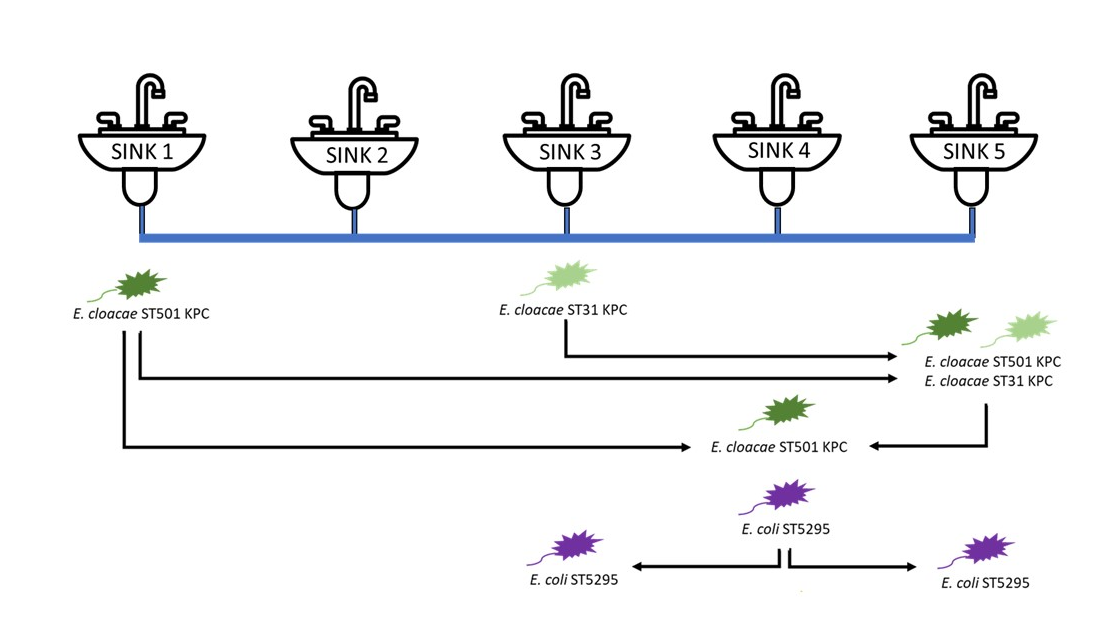Sink waste traps and drains are a reservoir for multi-drug resistant Gram-negative bacteria in the hospital environment. It has been suggested that these bacteria can migrate through hospital plumbing. Hospital waste traps were installed in a laboratory model system where sinks were connected through a common wastewater pipe. Enterobacterales populations were monitored using selective culture, MALDI-TOF identification and antibiotic resistance profiling before and after a wastewater backflow event. When transfer between sinks was suspected, isolates were compared using whole-genome sequencing. Immediately after the wastewater backflow, two KPC-producing Enterobacter cloacae were recovered from a waste trap in which Carbapenemase-producing Enterobacterales (CPE) had not been detected previously. The isolates belonged to ST501 and ST31 and were genetically indistinguishable to those colonising sinks elsewhere in the system. Following inter-sink transfer, KPC-producing E. cloacae ST501 successfully integrated into the microbiome of the recipient sink and was detected in the waste trap water at least six months after the backflow event. Seven weeks and three months after the backflow, other inter-sink transfers involving Escherichia coli ST5295 and KPC-producing E. cloacae ST501 were also observed.

